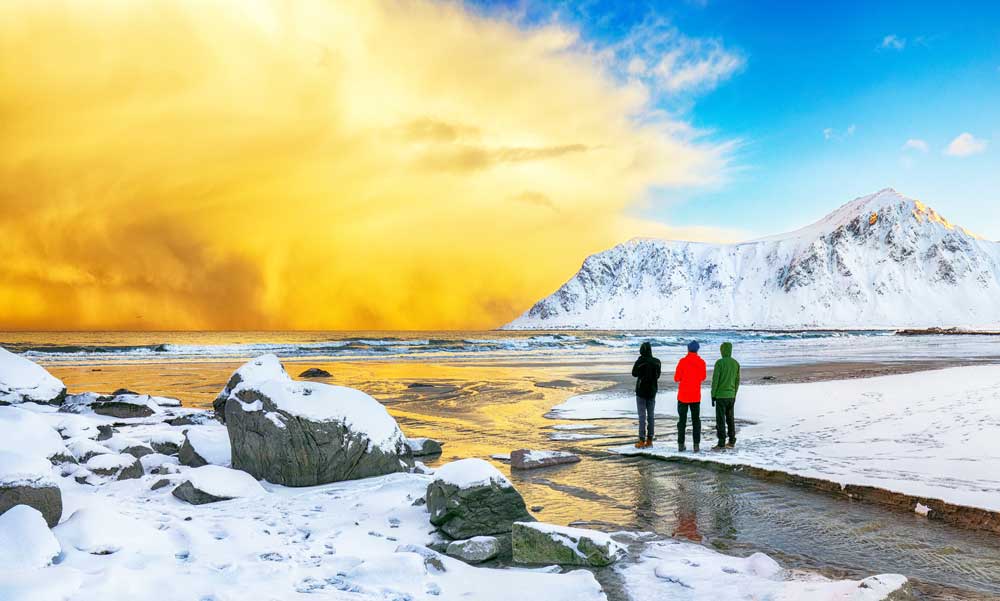When is the best time to go to Iceland?
The best time to go to Iceland is from June to August for most people. But that is not the definitive answer because it depends on what you want to see and what to explore. The wild weather keeps things interesting, but summer is hands down the best time to visit. From June to August, you get long daylight hours, comfy temps in the low 20°C (68 °F), and a bunch of cool summer festivals. It’s also the best season for hiking, thanks to drier conditions inland.
If whale watching is on your list, aim for May to September to get the best chances. Snow starts creeping in as early as September and can stick around until May, but autumn and early winter turn Iceland into a photographer’s dream.
Winter in Iceland is from November to March and can be rough, with brutal cold and road closures making some spots hard to reach. But on the flip side, this is prime time for catching the Northern Lights. February and March are perfect if you want to see both orcas and the aurora in one trip.
Visit Iceland in January
January is one of the chillest times to visit Iceland, with way fewer tourists around, so you can enjoy the main sights without the crowds. The days are super short. Think sunrise around 11 AM and sunset by 4 PM, which actually makes for great Northern Lights viewing. By the end of the month, daylight starts creeping back, giving you just enough time for adventures like horseback riding on Iceland’s famously tough little steeds.
Places to Visit in Iceland in January
- Reykjavik
-
Blue Lagoon
-
Thingvellir National Park
-
Gullfoss Waterfall
-
Skogafoss Waterfall
-
Seljalandsfoss Waterfall
-
Northern Lights viewing spots
-
Vatnajökull Ice Caves
-
Secret Lagoon (Flúðir)
-
Hallgrimskirkja Church
Visit Iceland in February
February is still a quiet time to visit Iceland, with plenty of winter magic. The days are slowly getting longer, sunrise is around 10 AM, and sunset by 5:30 PM, giving you more daylight for exploring while still having prime conditions for Northern Lights spotting. It’s also a great month for adventure, whether you’re riding Iceland’s sturdy horses, exploring ice caves, or even catching a glimpse of orcas along the coast. Average -6°C (21.2 °F) temperatures, although Reykjavik and the coastline is always warmer.
Places to Visit in Iceland in February
-
Reykjavik
-
Blue Lagoon
-
Jökulsárlón Glacier Lagoon
-
Diamond Beach
-
Thingvellir National Park
-
Geysir Hot Springs
-
Northern Lights tours
-
Snæfellsnes Peninsula
-
Skogafoss Waterfall
-
Kirkjufell Mountain

Visit Iceland in March
March is a fantastic time to visit Iceland, balancing winter’s charm with the first hints of spring. The days are getting noticeably longer, sunrise around 8:30 AM and sunset close to 7 PM—so you have more daylight for exploring while still having a good shot at catching the Northern Lights.
Temperatures in March hover around -2°C to 3°C (28°F to 37°F), so it’s still cold, but not as harsh as the deep winter months. It’s a great time for winter activities like ice caving and glacier hiking, and orca watching is at its peak along the coast.
Places to Visit in Iceland in March
-
Reykjavik
-
Thingvellir National Park
-
Gullfoss Waterfall
-
Seljalandsfoss
-
Vatnajökull Glacier
-
Diamond Beach
-
Northern Lights viewing spots
-
Skaftafell Nature Reserve
-
Snæfellsnes Peninsula
-
Húsavík (for orcas)
Visit Iceland in April
April is when Iceland starts shaking off its winter coat, with longer days and milder temperatures. Sunrise is around 6:30 AM, and sunset stretches past 8:30 PM, giving you plenty of daylight for exploring.
Temperatures in April range from 0°C to 7°C (32°F to 45°F), so while it’s still chilly, spring is slowly making an appearance. This is a great month for experiencing a mix of winter and spring activities, you can still visit ice caves and glaciers, but roads to some highland areas start becoming more accessible. The Northern Lights season is winding down, but there’s still a chance to catch them early in the month on clear nights. Plus, waterfalls begin to roar as the snow melts, making for some epic scenery.
Places to Visit in Iceland in April
-
Reykjavik
-
Blue Lagoon
-
Thingvellir National Park
-
Gullfoss
-
Seljalandsfoss
-
Skogafoss
-
Reynisfjara Black Sand Beach
-
Snæfellsnes Peninsula
-
Hraunfossar Waterfalls
-
Lava Centre (Hvolsvöllur)
Visit Iceland in May
May is when Iceland fully embraces spring, with longer, sunnier days and nature coming back to life. The sun rises around 4:30 AM and sets close to 10:30 PM, giving you nearly endless daylight for exploring.
Temperatures in May range from 4°C to 11°C (39°F to 52°F), making it one of the most comfortable months to visit. Snow is mostly gone from lower elevations, waterfalls are at their most powerful from the spring melt, and wildlife, including puffins and whales, becomes more active. While the Northern Lights season is over, this is a fantastic time for road trips, hiking, and soaking in Iceland’s incredible landscapes before the summer crowds arrive.
Places to Visit in Iceland in May
-
Reykjavik
-
Golden Circle
-
Reynisfjara Black Sand Beach
-
Skogafoss
-
Seljalandsfoss
-
Þórsmörk Valley
-
Húsavík (Whale Watching)
-
Snæfellsnes Peninsula
-
Glymur Waterfall
-
Vestmannaeyjar (Westman Islands)
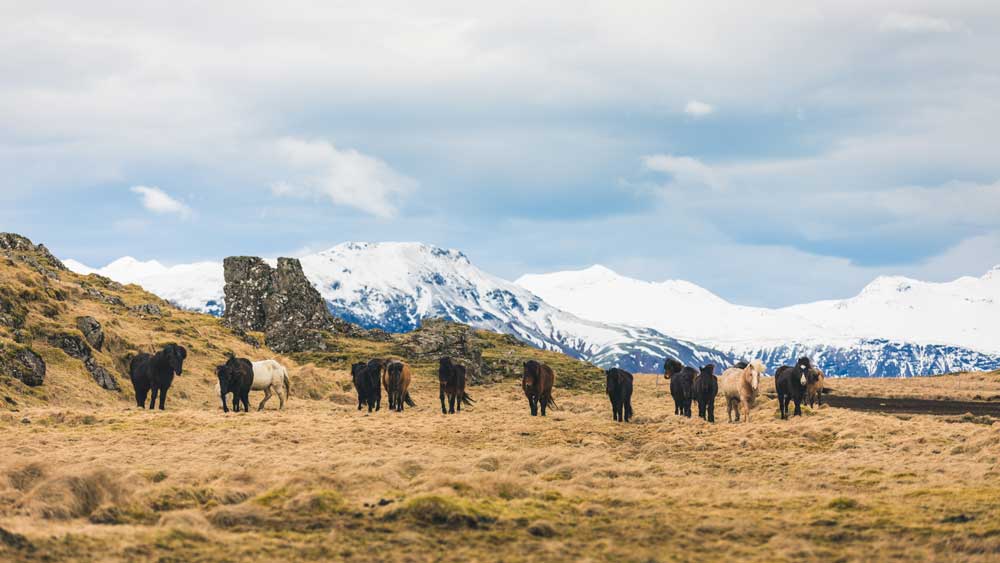
Visit Iceland in June
June kicks off the summer season in Iceland, and it’s one of the best times to visit if you love long days and outdoor adventures. Thanks to the midnight sun, daylight lasts nearly 24 hours, sunset blends into sunrise, so you can explore around the clock.
Temperatures in June typically range from 9°C to 15°C (48°F to 59°F), with mild weather that’s perfect for hiking, road trips, and camping. The highlands start to open up, wildflowers bloom across the countryside, and puffins are nesting along the cliffs. Festivals and events start popping up too, bringing some local energy to the mix. Just don’t forget a sleep mask, night doesn’t exactly look like night this time of year.
Places to Visit in Iceland in June
-
Reykjavik
-
Landmannalaugar
-
Þórsmörk Valley
-
Golden Circle
-
Skogafoss
-
Snæfellsnes Peninsula
-
Húsavík
-
Westfjords
-
Askja Caldera
-
Reynisfjara Beach
Visit Iceland in July
July is peak summer in Iceland, and the island is buzzing with life, lush green landscapes, full access to remote areas, and loads of daylight thanks to the lingering effects of the midnight sun. You can expect sunrise around 3:30 AM and sunset just before midnight, so there’s no rush to squeeze everything in.
Temperatures in July range from 10°C to 16°C (50°F to 61°F), making it the warmest month of the year. It’s the perfect time for hiking in the highlands, road tripping the Ring Road, or just soaking in hot springs under the soft summer sky. Wildlife watching is at its best too, puffins, whales, and wild sheep are all out doing their thing. Just be ready for crowds, since July is also one of the most popular months to visit.
Places to Visit in Iceland in July
-
Reykjavik
-
Golden Circle
-
Westfjords
-
Landmannalaugar
-
Húsavík
-
Snæfellsnes Peninsula
-
Þórsmörk Valley
-
Askja
-
Jökulsárlón
-
Reynisfjara
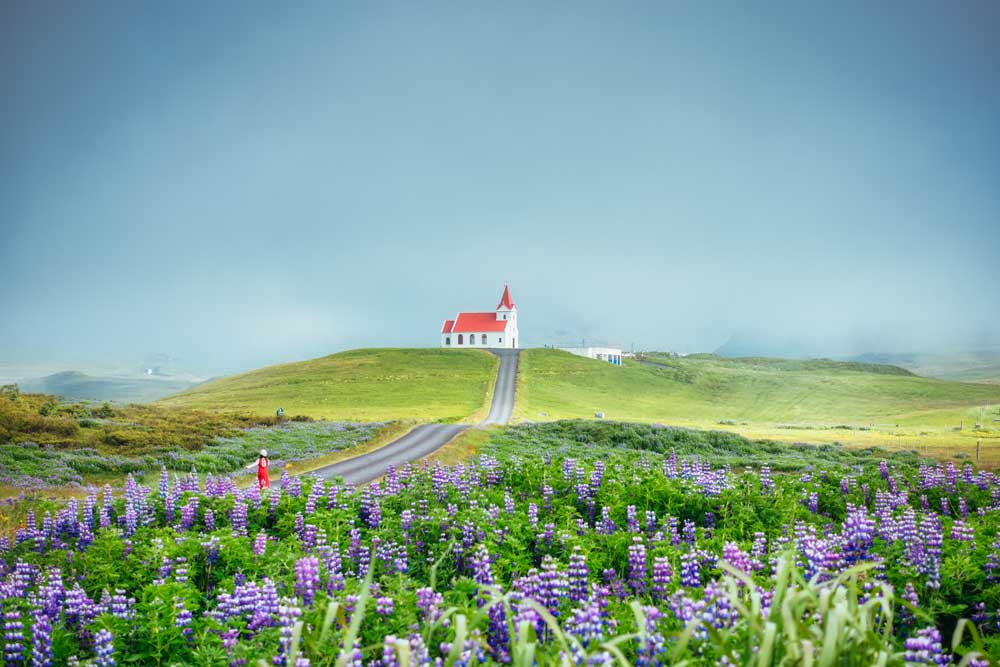
Visit Iceland in August
August is the tail end of Iceland’s summer, and it’s still a fantastic time to visit. The weather is mild, the landscapes are at their greenest, and there’s still plenty of daylight, sunrise around 5 AM and sunset close to 9:30 PM—giving you long days for exploring.
Temperatures usually range from 8°C to 14°C (46°F to 57°F), making it great for hiking, road trips, and festivals. The highlands are still accessible, and you can enjoy warm(ish) evenings soaking in hot springs or catching live music and cultural events. Puffins stick around until mid-August, and berry-picking season kicks off if you’re into foraging. By the end of the month, the nights start getting dark enough for the very first glimpses of the Northern Lights, just a little teaser for what’s to come.
Places to Visit in Iceland in August
-
Reykjavik
-
Skogafoss
-
Seljalandsfoss
-
Golden Circle
-
Snæfellsnes Peninsula
-
Westfjords
-
Landmannalaugar
-
Þórsmörk
-
Húsavík
-
Vestmannaeyjar
Visit Iceland in September
September is when Iceland starts to shift from summer into autumn, bringing cooler weather, fewer tourists, and a golden glow to the landscapes. Daylight is still generous, sunrise around 6:30 AM and sunset around 8 PM—so you’ve got plenty of time to explore without the summer crowds.
Temperatures typically range from 5°C to 11°C (41°F to 52°F). The fall colors start to pop, especially around the countryside and mossy lava fields, making it a dream for photographers. It’s also the start of the Northern Lights season, with darker nights offering a real chance to catch the aurora. While some highland roads begin to close, most of the country is still easily accessible. September is that sweet spot where you can enjoy a bit of everything, Iceland’s wild nature, cultural charm, and a hint of cozy autumn vibes.
Places to Visit in Iceland in September
-
Reykjavik
-
Golden Circle
-
Skogafoss
-
Þórsmörk
-
Snæfellsnes Peninsula
-
Jökulsárlón
-
Diamond Beach
-
Reynisfjara
-
Glymur Waterfall
-
Northern Lights tours
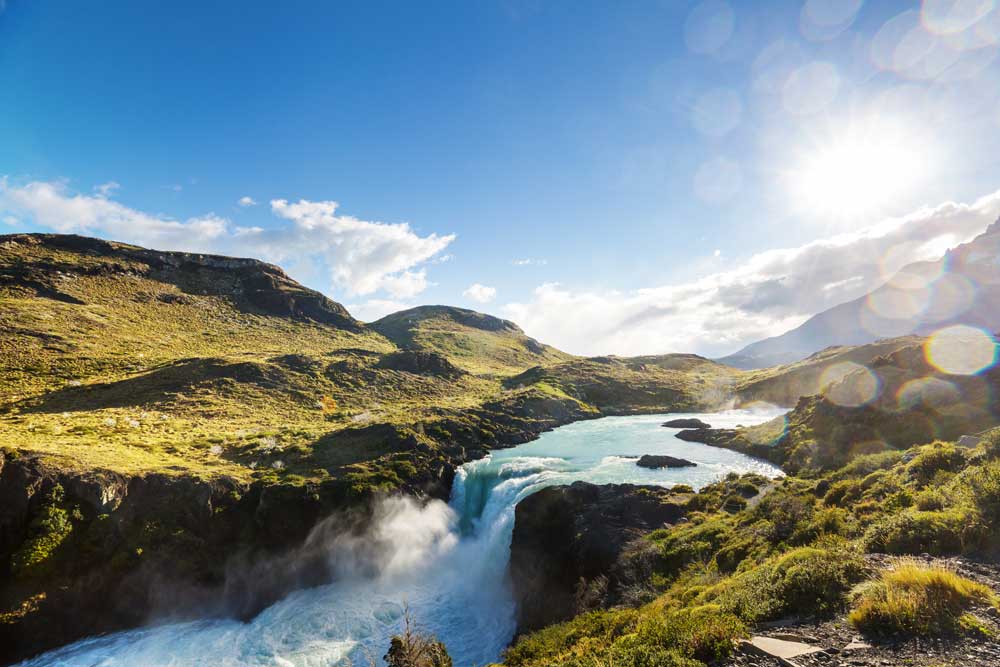
Visit Iceland in October
October brings a full dose of autumn to Iceland, crisp air, colorful landscapes, and the return of long, cozy nights. Daylight starts to shrink, with sunrise around 8:30 AM and sunset by 6 PM, but that just means more time for stargazing and chasing the Northern Lights.
Temperatures usually range from 1°C to 7°C (34°F to 45°F), so it’s definitely sweater weather, and maybe a waterproof jacket too. Fall colors are still hanging on in many parts of the country, especially in the lowlands and around lava fields. Some highland roads will be closed by now, but most major sights are still accessible. October is a quieter month, perfect if you want to avoid the crowds and experience Iceland’s moody, dramatic beauty at a slower pace.
Places to Visit in Iceland in October
-
Reykjavik
-
Blue Lagoon
-
Golden Circle
-
Seljalandsfoss
-
Thingvellir
-
Skogafoss
-
Snæfellsnes Peninsula
-
Lava Centre
-
Diamond Beach
-
Northern Lights viewing areas
Visit Iceland in November
November marks the beginning of Iceland’s true winter season, shorter days, colder temps, and a peaceful, snowy stillness settling over the country. Sunrise is around 10 AM and sunset hits by 4 PM, so the daylight is limited, but that just means longer nights for Northern Lights hunting.
Temperatures typically range from -3°C to 3°C (27°F to 37°F). Snow starts to blanket the landscapes, turning waterfalls and lava fields into a winter wonderland. Some rural roads may be closed due to weather, but many of Iceland’s most famous sights are still accessible. November is a quieter month for tourism, which means fewer crowds and a more relaxed vibe. It’s also a great time to explore ice caves, soak in hot springs, or just enjoy the cozy side of Iceland with a warm drink in a geothermally heated café.
Places to Visit in Iceland in November
-
Reykjavik
-
Blue Lagoon
-
Golden Circle
-
Thingvellir
-
Seljalandsfoss
-
Northern Lights tours
-
Skaftafell
-
Skogafoss
-
Jökulsárlón
-
Hallgrimskirkja
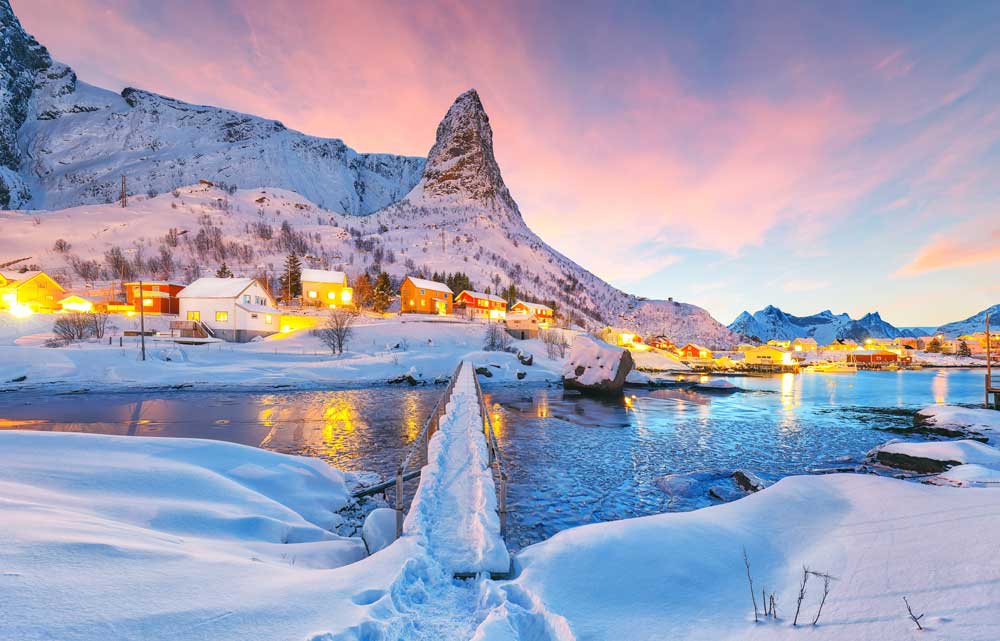
Visit Iceland in December
December in Iceland is pure winter magic, think snowy landscapes, twinkling holiday lights, and dark skies perfect for Northern Lights spotting. With sunrise around 11 AM and sunset by 3:30 PM, daylight is scarce, but the cozy vibes are off the charts.
Temperatures usually hover between -1°C and 4°C (30°F to 39°F). Snow covers much of the country, creating a dreamy backdrop for exploring waterfalls, lava fields, and geothermal hot springs. Reykjavik goes all out with festive decorations and Christmas markets, making it a great time to experience Icelandic holiday traditions. While some remote areas might be tough to reach due to weather, popular spots like the Golden Circle and Blue Lagoon are still easy to enjoy. If you’re up for winter adventure mixed with serious holiday charm, December is the time to go.
Places to Visit in Iceland in December
-
Reykjavik (Christmas Markets)
-
Blue Lagoon
-
Golden Circle
-
Skogafoss
-
Thingvellir
-
Northern Lights tours
-
Jökulsárlón
-
Seljalandsfoss
-
Hallgrimskirkja
-
Vatnajökull Ice Caves
So, when is the best time to visit Iceland?
Ultimately, the best time to visit Iceland depends on what kind of experience you’re after. Summer (June to August) is ideal if you want long daylight hours, mild weather, and full access to remote regions like the Highlands and Westfjords. It’s perfect for road trips, hiking, puffin spotting, and enjoying vibrant local festivals. The midnight sun adds a surreal, magical touch. Imagine exploring waterfalls or black sand beaches at 11 PM with no flashlight needed.
On the flip side, if you’re dreaming of Northern Lights, snowy landscapes, and fewer crowds, winter (November to March) is your season. While the weather can be unpredictable and some roads may close, the reward is the chance to see Iceland’s dramatic winter beauty in peace and quiet. Plus, shoulder seasons like April, May, September, and October offer a sweet spot—fewer tourists, decent weather, and a mix of seasonal activities. No matter when you go, Iceland never disappoints—it just shows off a different kind of magic.
